
Chapter 11 Pricing with Market Power Chapter Outline Capturing Consumer Surplus >Price Discrimination >Intertemporal Price Discrimination and Peak-Load Pricing The Two-Part Tariff >Bundling >Advertising
Chapter 11 Pricing with Market Power Chapter Outline ➢ Capturing Consumer Surplus ➢ Price Discrimination ➢ Intertemporal Price Discrimination and Peak-Load Pricing ➢ The Two-Part Tariff ➢ Bundling ➢ Advertising

11.1 Capturing Consumer Surplus Pmax $/Q P1 P* B P2 MC P D MR Q* Quantity Capturing Consumer Surplus
Capturing Consumer Surplus 11.1 Capturing Consumer Surplus
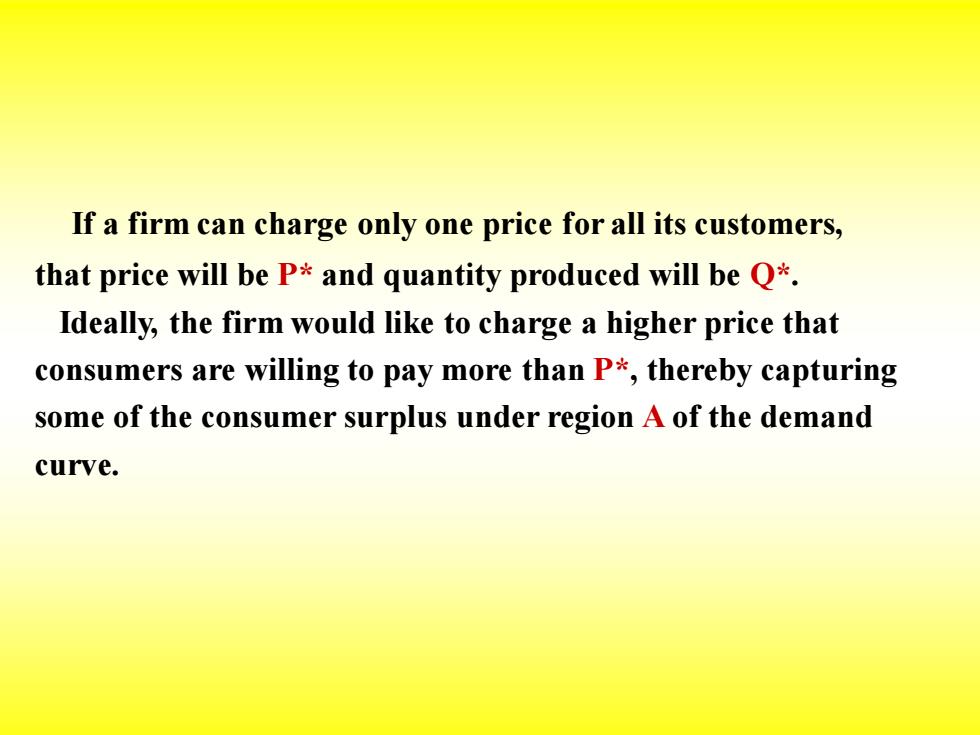
If a firm can charge only one price for all its customers, that price will be P*and quantity produced will be Q*. Ideally,the firm would like to charge a higher price that consumers are willing to pay more than P*,thereby capturing some of the consumer surplus under region A of the demand curve
If a firm can charge only one price for all its customers, that price will be P* and quantity produced will be Q*. Ideally, the firm would like to charge a higher price that consumers are willing to pay more than P*, thereby capturing some of the consumer surplus under region A of the demand curve
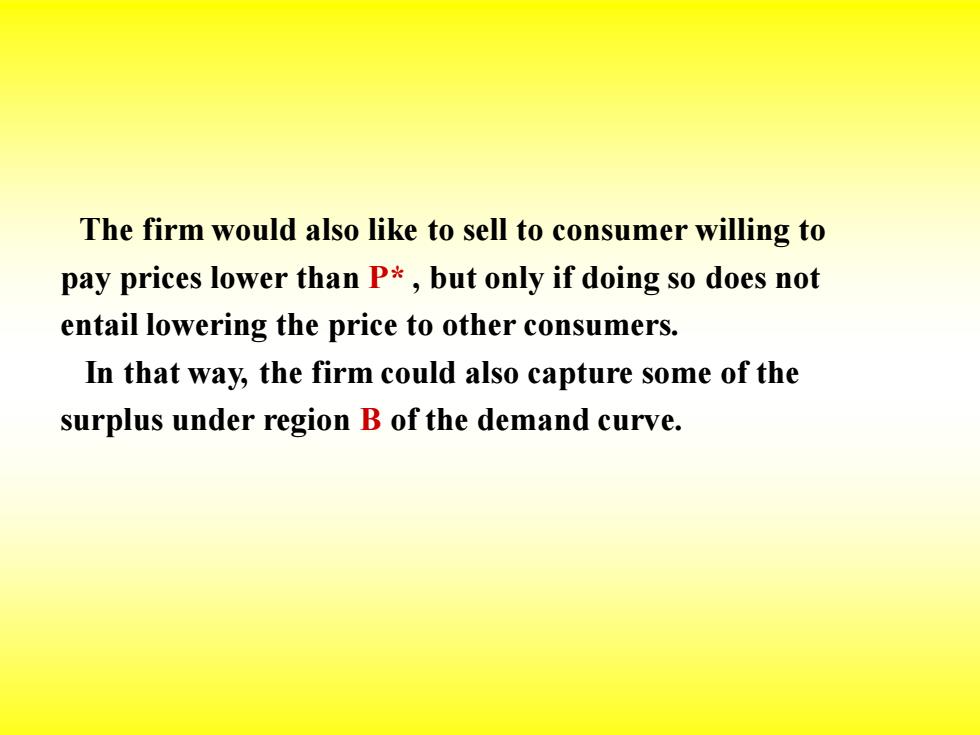
The firm would also like to sell to consumer willing to pay prices lower than P*,but only if doing so does not entail lowering the price to other consumers. In that way,the firm could also capture some of the surplus under region B of the demand curve
The firm would also like to sell to consumer willing to pay prices lower than P* , but only if doing so does not entail lowering the price to other consumers. In that way, the firm could also capture some of the surplus under region B of the demand curve

11,2 Price Discrimination Price discrimination-Practice of charging different prices to different consumers for similar goods. Reservation price-Maximum price that a customer is willing to pay for a good
11.2 Price Discrimination Price discrimination - Practice of charging different prices to different consumers for similar goods. Reservation price - Maximum price that a customer is wi1ling to pay for a good
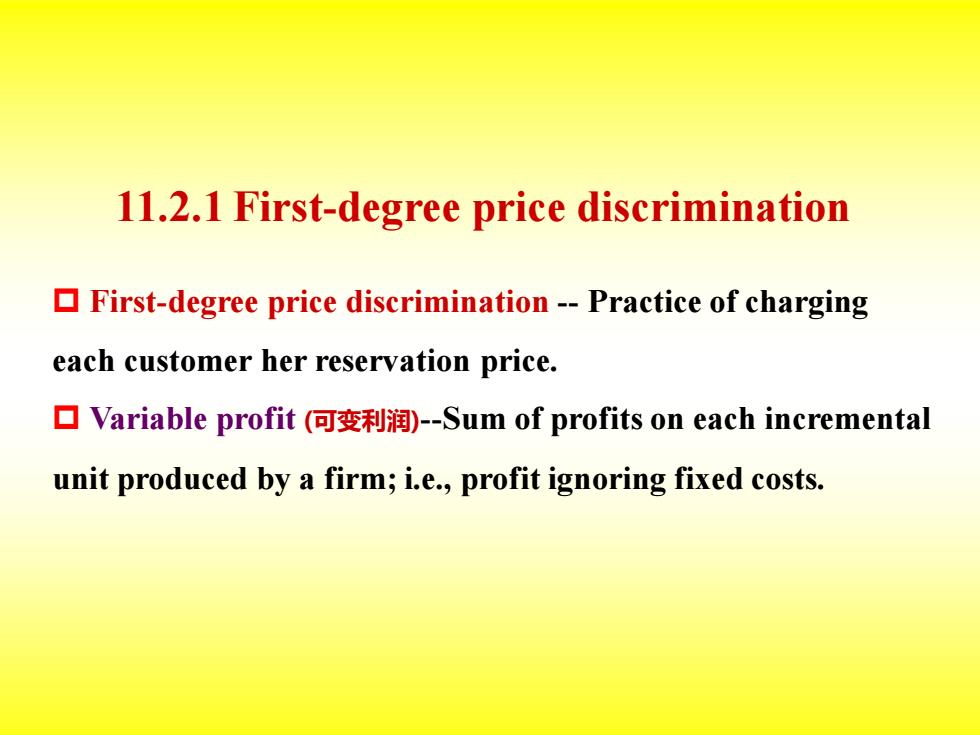
11.2.1 First-degree price discrimination First-degree price discrimination-Practice of charging each customer her reservation price. ▣Variable profit(何变利润)-Sum of profits on each incremental unit produced by a firm;i.e.,profit ignoring fixed costs
11.2.1 First-degree price discrimination First-degree price discrimination - Practice of charging each customer her reservation price. Variable profit (可变利润)-Sum of profits on each incremental unit produced by a firm; i.e., profit ignoring fixed costs
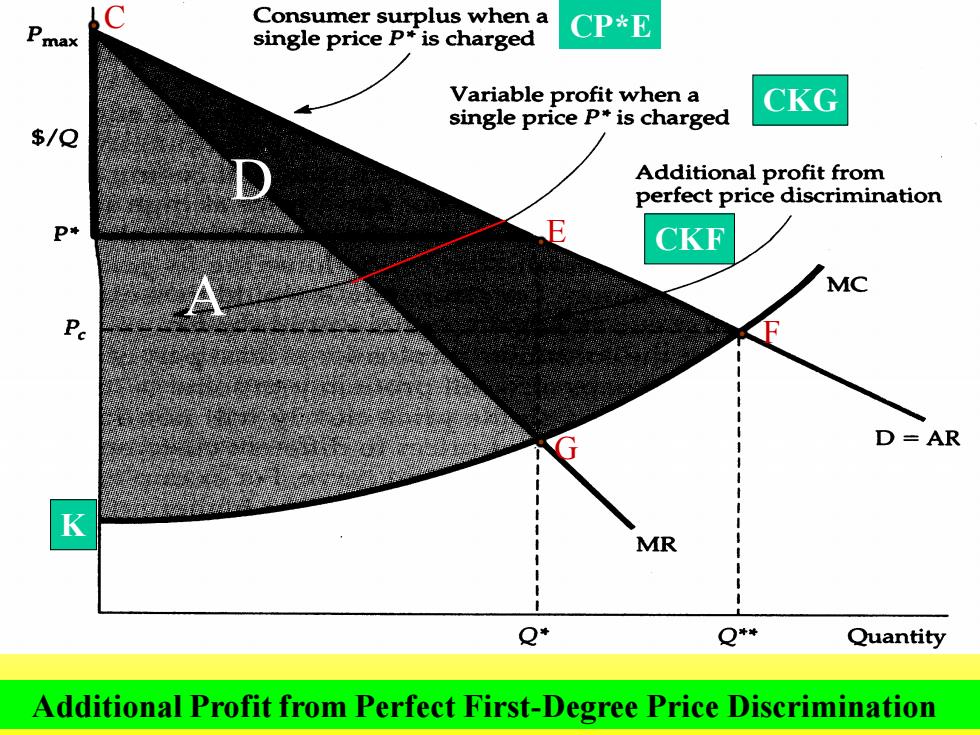
Consumer surplus when a Pmax single price p*is charged CP*E Variable profit when a CKG single price P*is charged $/Q Additional profit from perfect price discrimination CKF P D=AR K MR Q* Q+* Quantity Additional Profit from Perfect First-Degree Price Discrimination
Additional Profit from Perfect First-Degree Price Discrimination D A C CP*E E F G K CKF CKG
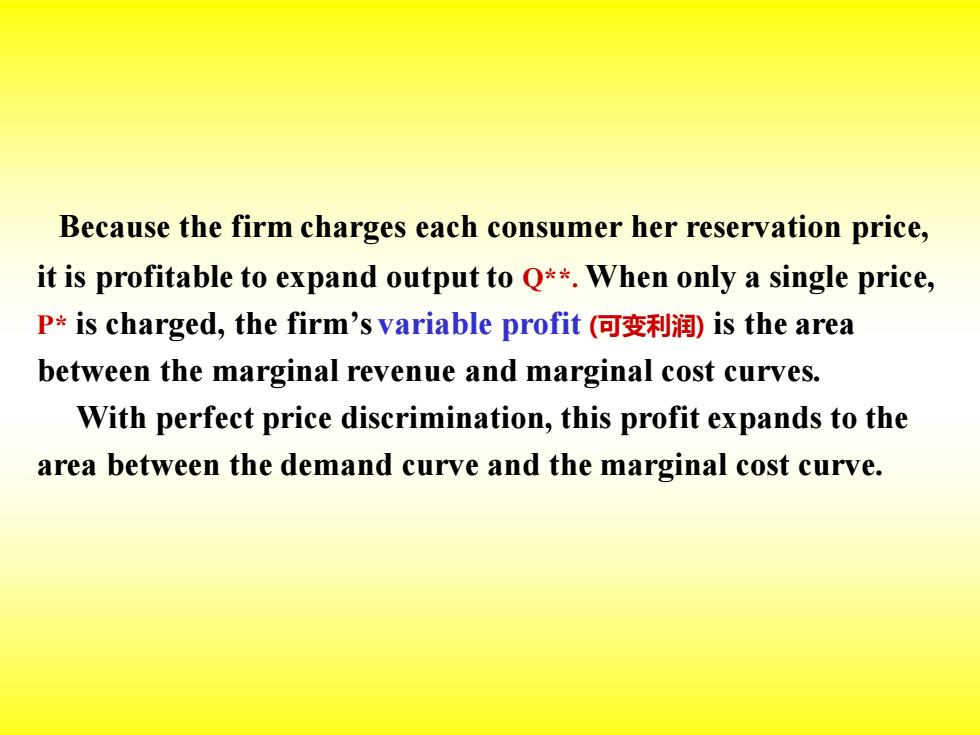
Because the firm charges each consumer her reservation price, it is profitable to expand output to Q**.When only a single price, P*is charged,.the firm's variable profit(可变利润)is the area between the marginal revenue and marginal cost curves. With perfect price discrimination,this profit expands to the area between the demand curve and the marginal cost curve
Because the firm charges each consumer her reservation price, it is profitable to expand output to Q**. When only a single price, P* is charged, the firm’s variable profit (可变利润) is the area between the marginal revenue and marginal cost curves. With perfect price discrimination, this profit expands to the area between the demand curve and the marginal cost curve
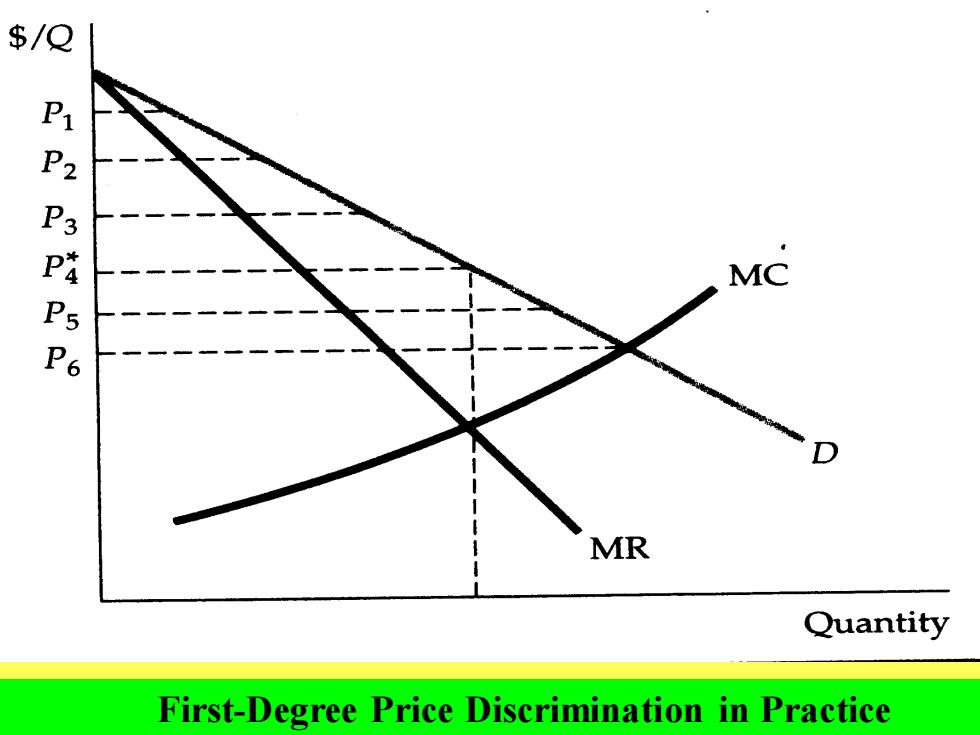
$/Q P MC MR Quantity First-Degree Price Discrimination in Practice
First-Degree Price Discrimination in Practice
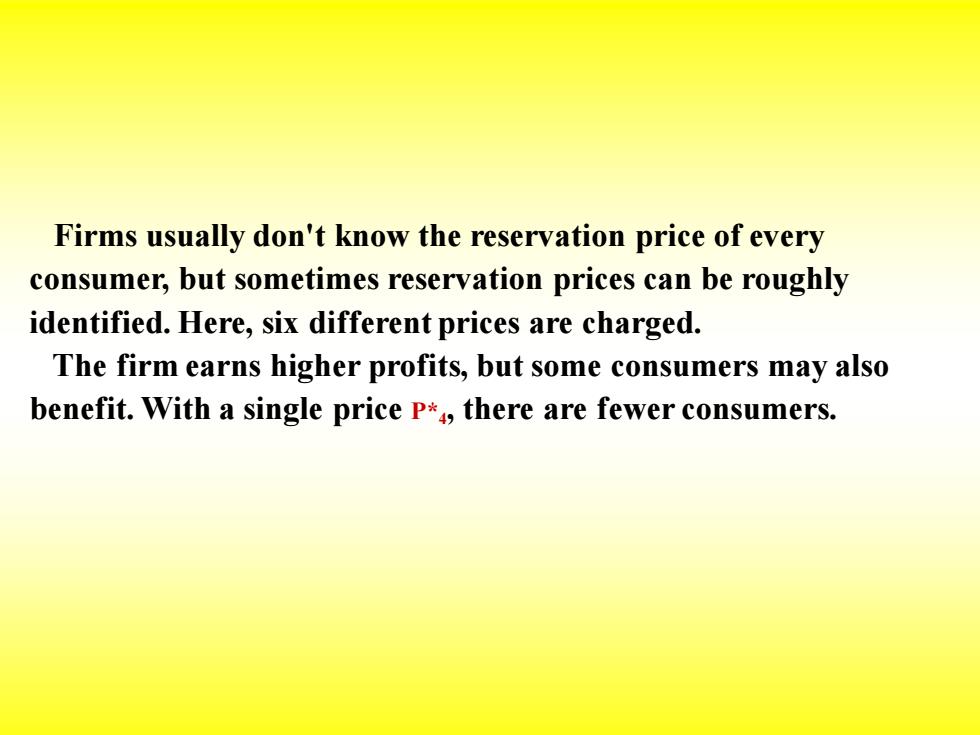
Firms usually don't know the reservation price of every consumer,but sometimes reservation prices can be roughly identified.Here,six different prices are charged. The firm earns higher profits,but some consumers may also benefit.With a single price P*,there are fewer consumers
Firms usually don't know the reservation price of every consumer, but sometimes reservation prices can be roughly identified. Here, six different prices are charged. The firm earns higher profits, but some consumers may also benefit. With a single price P*4 , there are fewer consumers